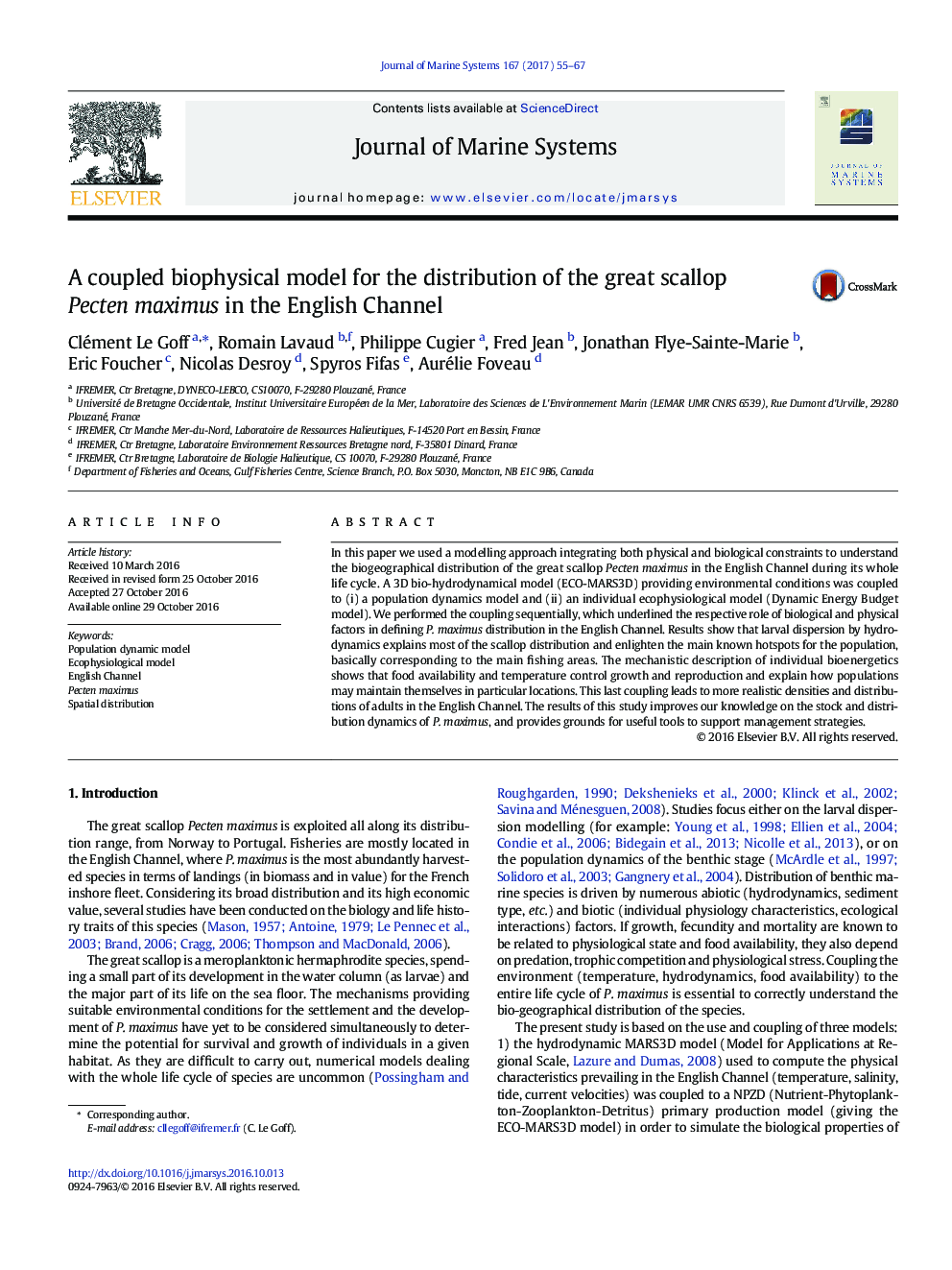| Article ID | Journal | Published Year | Pages | File Type |
|---|---|---|---|---|
| 8886059 | Journal of Marine Systems | 2017 | 13 Pages |
Abstract
In this paper we used a modelling approach integrating both physical and biological constraints to understand the biogeographical distribution of the great scallop Pecten maximus in the English Channel during its whole life cycle. A 3D bio-hydrodynamical model (ECO-MARS3D) providing environmental conditions was coupled to (i) a population dynamics model and (ii) an individual ecophysiological model (Dynamic Energy Budget model). We performed the coupling sequentially, which underlined the respective role of biological and physical factors in defining P. maximus distribution in the English Channel. Results show that larval dispersion by hydrodynamics explains most of the scallop distribution and enlighten the main known hotspots for the population, basically corresponding to the main fishing areas. The mechanistic description of individual bioenergetics shows that food availability and temperature control growth and reproduction and explain how populations may maintain themselves in particular locations. This last coupling leads to more realistic densities and distributions of adults in the English Channel. The results of this study improves our knowledge on the stock and distribution dynamics of P. maximus, and provides grounds for useful tools to support management strategies.
Related Topics
Physical Sciences and Engineering
Earth and Planetary Sciences
Oceanography
Authors
Clément Le Goff, Romain Lavaud, Philippe Cugier, Fred Jean, Jonathan Flye-Sainte-Marie, Eric Foucher, Nicolas Desroy, Spyros Fifas, Aurélie Foveau,
